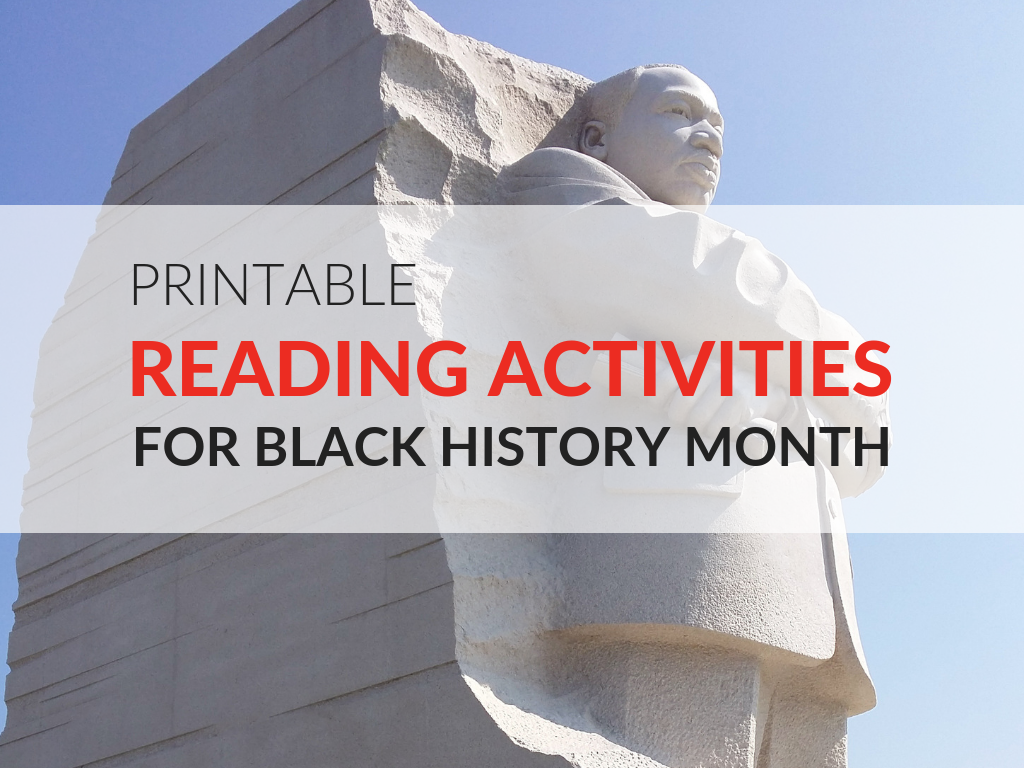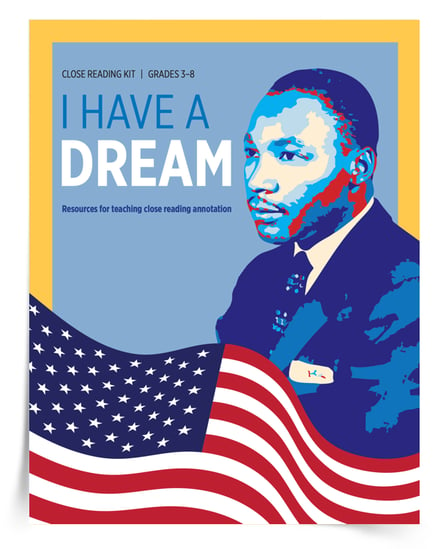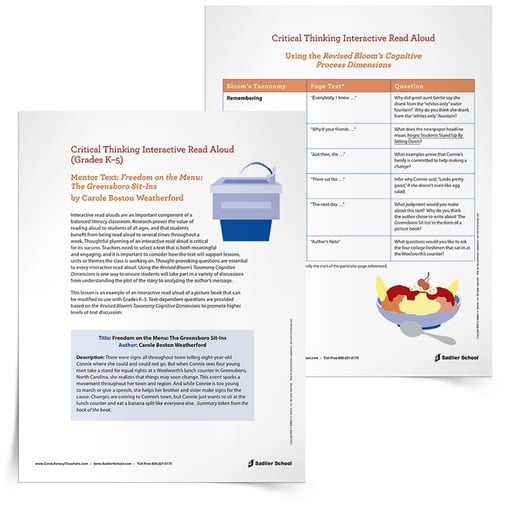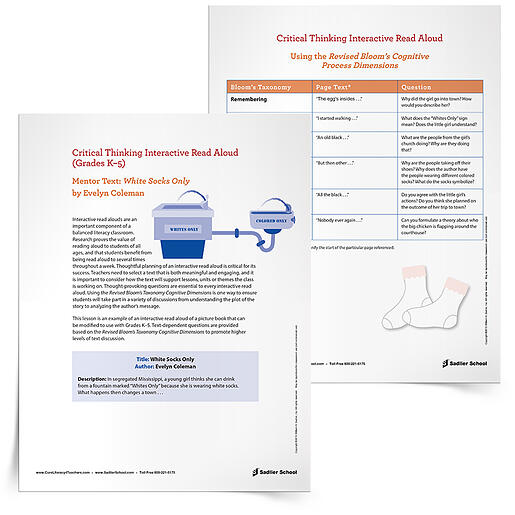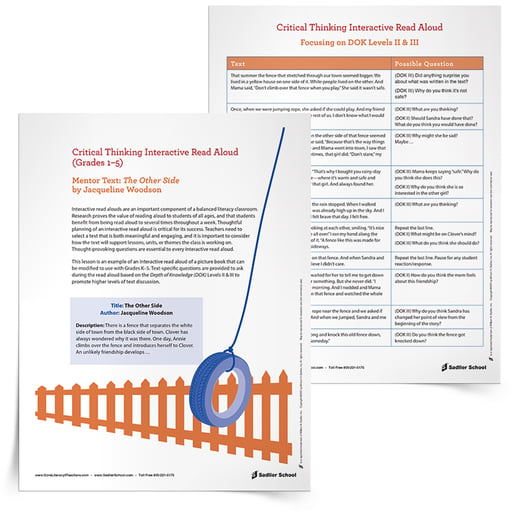February 1, 2023 CL Seasonal Activities Winter, ELA Seasonal - Winter, ELA K-5, ELA Focus - Reading, ELA Resources - Activities, Core Literacy
Printable Reading Activities for Black History Month
By: Erin Lynch
In honor of Black History Month, I wanted to highlight some of my timely printable reading activities that you may want to try with your students. In this article, you'll find six free Black History Month printable activities you can download and print for the in-person or virtual classroom.
Black History Month Printable Activities
Ruby Bridges Lesson– Comparing Firsthand & Secondhand Accounts, Grades 4+
My inspiration for a unit focused on comparing firsthand and secondhand accounts came after reading Through My Eyes by Ruby Bridges.
Over the years, I have read many texts with my students about Ruby Bridges, but Through My Eyes was the first book I had read that was written by Ruby Bridges, herself. Her voice and thoughts came to life. It was through this text that I finally started to grasp what it must have felt like to be a part of a moment that was so historical, so life-changing, and so frightening.
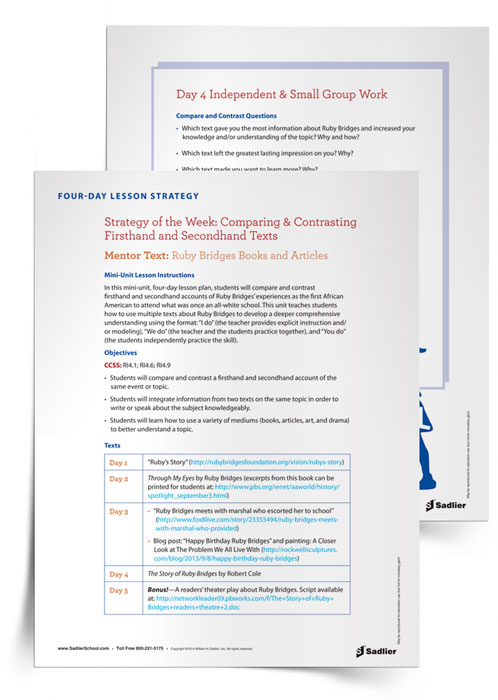
I used this unit with both my 4th and 5th grade students. After reading portions of Through My Eyes, my students immediately began talking about how the book was more "real" and "sad" because of the “personal touches.” Every student agreed that the firsthand account had a more powerful and lasting impact on them.
With the reading strategy lesson, I also wanted to use a variety of texts that included the thoughts and points of view of other individuals who were closely involved with Ruby's transition to the William Frantz Elementary School. I wanted to show my students that art can represent one's point of view on a subject, which is why I included an article on the Norman Rockwell painting, The Problem We All Live With.
Download the Comparing and Contrasting Firsthand and Secondhand Texts Lesson Plan to use with your students. You will not be disappointed.
"I Have a Dream" Close Reading Kit, Grades 3+
Since I started teaching I have dedicated time in either January or February to honor Dr. Martin Luther King, Jr., with my students by reading about him, listening to his speeches, and discussing his message.
I am always amazed that even after teaching about MLK for over 18 years I am still able to learn something new about him, or to be inspired in some new way by his words.
My "I Have a Dream" Close Reading Kit includes resources for teaching close reading annotation! In the kit you'll find an instructional guide for teachers and annotations for the first 10 paragraphs of Dr. Martin Luther King Jr.'s "I Have a Dream" speech.
In addition to the annotation resources, the I Have a Dream" Close Reading Kit includes an extension activity to analyze the author's craft (Dr. Martin Luther King, Jr.'s word choice) and a guide to improving comprehension by focusing on the big idea of each stanza.
Glory Be Character Development Activity, Grades 1–3
When I first read Glory Be by Augusta Scattergood what struck me immediately was the richness of the interesting and unique characters. This novel is perfect for analyzing characters, their relationships and interactions with each other. The main character Glory has a major change from her simplistic way of thinking at the start of the book to really seeing the big picture of what is going on in her community and the country by the end of the novel. Glory begins to understand what racism is and what she can do to stand up for what she believes is right. She grows and learns about herself from her interactions with almost every character in the book.
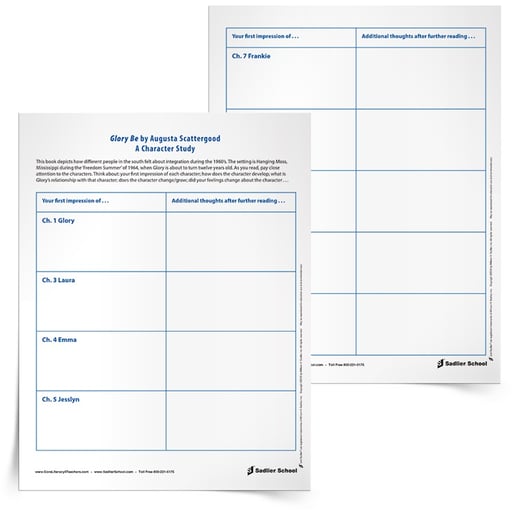
My students use this book during our historical fiction unit as one of their literature circle book options. Along with recording talking points to discuss with their small group, I have my students take notes about Glory Be on the Character Study Graphic Organizer available for download.
This organizer is set-up into two sections. I ask students to record their thinking about the characters during the first half of the book in section one, and then, to record their thinking about the characters during the second half of the book in the second section. What this simple, yet powerful, organizer does is provide students with a clear visual to notice 'character change' from the beginning of the book to the end of the book.
Interactive Read Aloud: Freedom On The Menu, The Greensboro Sit-Ins by Carole Boston Weatherford, Grades K–5
Description: There are signs all over town telling eight year-old Connie where she can and cannot go. But when Connie sees four young men take a stand for equal rights at a Woolworth’s lunch counter in Greensboro, North Carolina, she realizes that things may soon change. This event sparks a movement throughout her town and region. And while Connie is too young to march or to give a speech, she helps her brother and sister make signs for the cause. Changes are coming to Connie’s town, but Connie just wants to sit at the lunch counter and eat a banana split like everyone else.
Interactive Read Aloud: White Socks Only by Evelyn Coleman, Grades K–5
Description: In segregated Mississippi, a young girl thinks she can drink from a fountain marked “Whites Only” because she is wearing white socks. What happens then changes a town.
This is a great book to read during Black History month, or any time of the year. I had my students watch Amber Tamblyn read it at http://www.storylineonline.net/white-socks-only/ Storyline Online is a website run by the SAG Foundation, where actors read aloud popular picture books. My students love hearing famous actors read some of their favorite picture books to them.
Interactive Read Aloud: The Other Side by Jacqueline Woodson, Grades K–5
Description: There is a fence that separates the white side of town from the black side of town. Clover has always wondered why it was there. One day, Annie climbs over the fence and introduces herself to Clover. An unlikely friendship develops.
Help students understand this picture book by using the accompanying Interactive Read Aloud resource as you read about the confusion children experience when they witness racism or racial tensions.



